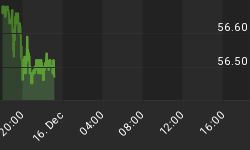The US economy is resilient, despite the world's slowdown. European leaders will instead do anything to support the Eurozone. Historically, the last quarter of the year favors stocks and gold, and penalizes the US dollar.
Considering everything, it was not so bad.
After rising 2.0% in the first quarter of 2012 and topping 4.0% in the last part of 2011, GDP growth fell to 1.5% in the second quarter of this year. The economy is clearly contracting, but the decline remains contained so far. Household spending fell to 1.5% from 2.4%. Business investment slid to 5.3% from 7.5%. Residential investment increased for the fifth straight quarter. Finally, exports were quite strong at +5.3%, considering the global slowdown. The data also confirms that recoveries are very mild. In fact, the economic contraction that started in 2000 is still ongoing. There are some similarities with the bear market of 1929-1942, when tops were reached roughly every 5 years from the bottoms.
What could happen next? Economic growth is tepid, and employment is not picking-up. Consumers focused on rebuilding their saving rate during the past months and consumption is low. Since 2000, median real family income in the US has fallen roughly 6%. As a result, quantitative easing three (Q3) is still a possibility. The timing is not clear yet. The Fed will meet again this week. However, any decision could be postponed until September. Will Mr. Bernanke show his cards during the Jackson Hole conference in late August? The S&P 500 index has finally moved above the important resistance at 1380. It should challenge 1400 short-term and eventually target 1500. Seasonally, the index tends to be weak until September and then rises during the last three months of the year.
Europe: Will action follow words?
In Europe, the high level of concern is impacting business confidence. In July, the composite PMI for activity, a leading indicator for GDP performance, printed 46.4. It was unchanged compared to the previous month, but remains well below the benchmark of 50 and is expected to decline further, as new orders are contracting. Companies are reducing their labor forces, since expectations are not bright. In fact, important countries, such as Germany and France, are showing bold slowdown in manufacturing and services. The output declined in Germany to 47.3 from 48.1. In France, it rose to 48 from 47.3. In July, the German IFO business climate index fell for the third straight month to 103.3 from 105.2. The IFO expectations index is now at 95.6, below the average of 99.9. The ECB president, Mario Draghi, said the institution will do anything to preserve the Eurozone. The Bundesbank responded that the ECB's buying of government bonds will create more problems.
The situation remains critical.
Greece must repay 3.1 billion euros worth of bonds to the ECB by August 20. The country can no longer make it, as its economy is in a deep depression. In Spain, on the other hand, the recapitalization of banks with EU funds has failed to calm the financial markets so far. Incertitude persists over the capacity of the banking system to absorb its debt, while the autonomous regions are on the brink of bankruptcy. It is clear that the European crisis is deteriorating and probably a bottom has not yet been reached. Most long-term economic cycles end with a big splash, or with spectacular fireworks in case of an up-trend, before finally changing their trajectories. Nonetheless, the US dollar appears to be topping for now. What is left to buy when most speculators have massively bid in favor of the greenback? In the past, the US dollar has declined from mid-year until year-end. The British pound could play a leading role among the majors, along with the commodity currencies, but the euro should rise a bit as well.
















